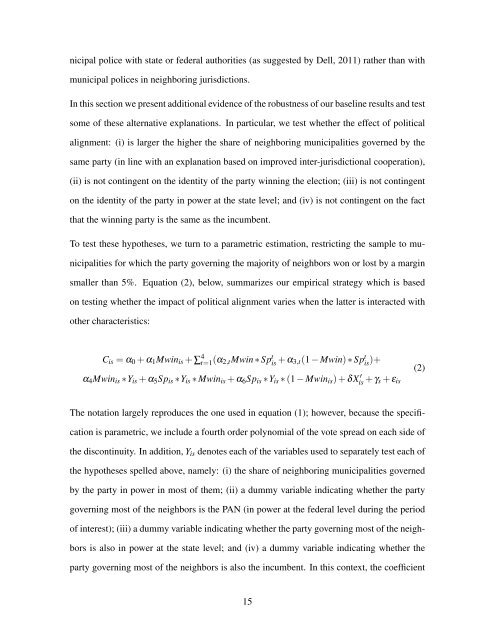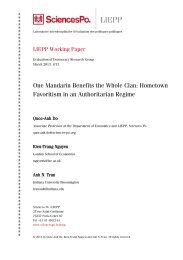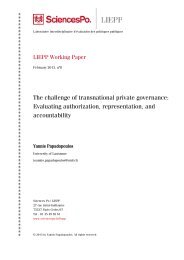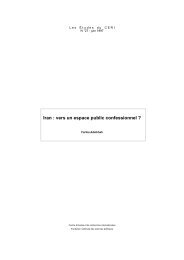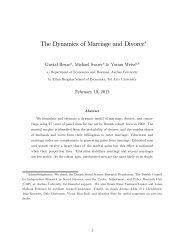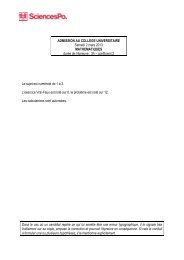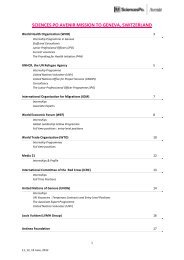Fighting Crime with a Little Help from my Friends ... - Sciences Po
Fighting Crime with a Little Help from my Friends ... - Sciences Po
Fighting Crime with a Little Help from my Friends ... - Sciences Po
Create successful ePaper yourself
Turn your PDF publications into a flip-book with our unique Google optimized e-Paper software.
nicipal police <strong>with</strong> state or federal authorities (as suggested by Dell, 2011) rather than <strong>with</strong>municipal polices in neighboring jurisdictions.In this section we present additional evidence of the robustness of our baseline results and testsome of these alternative explanations. In particular, we test whether the effect of politicalalignment: (i) is larger the higher the share of neighboring municipalities governed by thesame party (in line <strong>with</strong> an explanation based on improved inter-jurisdictional cooperation),(ii) is not contingent on the identity of the party winning the election; (iii) is not contingenton the identity of the party in power at the state level; and (iv) is not contingent on the factthat the winning party is the same as the incumbent.To test these hypotheses, we turn to a parametric estimation, restricting the sample to municipalitiesfor which the party governing the majority of neighbors won or lost by a marginsmaller than 5%. Equation (2), below, summarizes our empirical strategy which is basedon testing whether the impact of political alignment varies when the latter is interacted <strong>with</strong>other characteristics:C is = α 0 + α 1 Mwin is + ∑t=1 4 (α 2,tMwin ∗ Sp t is + α 3,t(1 − Mwin) ∗ Sp t is )+(2)α 4 Mwin is ∗Y is + α 5 Sp is ∗Y is ∗ Mwin is + α 6 Sp is ∗Y is ∗ (1 − Mwin is ) + δX is ′ + γ s + ε isThe notation largely reproduces the one used in equation (1); however, because the specificationis parametric, we include a fourth order polynomial of the vote spread on each side ofthe discontinuity. In addition, Y is denotes each of the variables used to separately test each ofthe hypotheses spelled above, namely: (i) the share of neighboring municipalities governedby the party in power in most of them; (ii) a dum<strong>my</strong> variable indicating whether the partygoverning most of the neighbors is the PAN (in power at the federal level during the periodof interest); (iii) a dum<strong>my</strong> variable indicating whether the party governing most of the neighborsis also in power at the state level; and (iv) a dum<strong>my</strong> variable indicating whether theparty governing most of the neighbors is also the incumbent. In this context, the coefficient15


